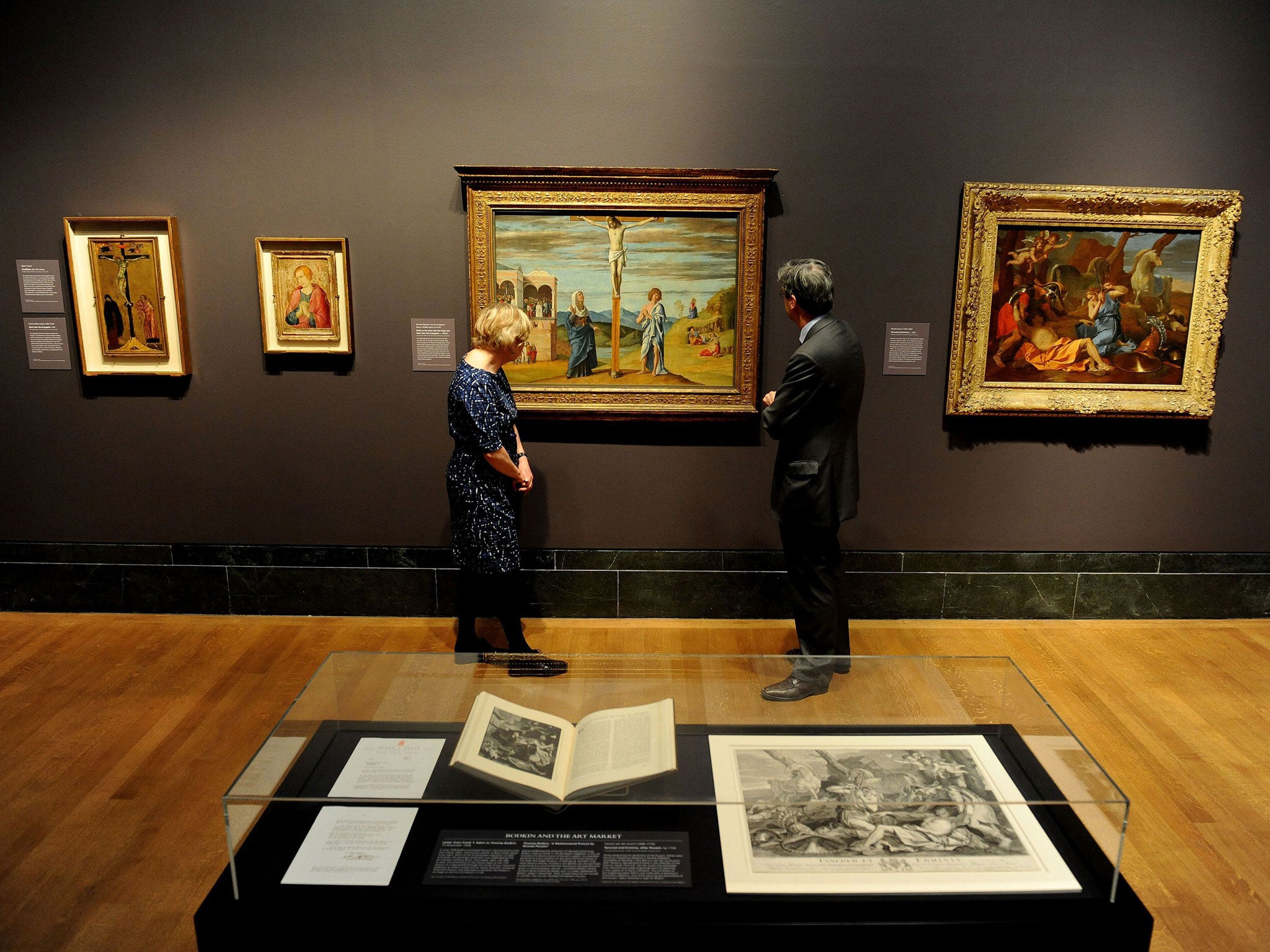The Independent's journalism is supported by our readers. When you purchase through links on our site, we may earn commission.
Charles Darwent on the Birth of a Collection: Oh! The beauty, the egos, the infighting
Don't miss Room 1 at the National Gallery this summer: it's the usual suspects, but with exquisite touches and a hidden story

A room with a dozen pictures in it, on loan from a Birmingham museum. Let's face it: PR for Birth of a Collection must have been uphill work. And yet the show, in Room 1 at the National Gallery, is among the most intriguing you'll see this summer.
This is only in part because of its paintings, although these – a Frans Hals, a Poussin, a Simone Martini, a Monet, a Manet, a Turner, etc – do make for exciting reading. The words "usual suspects" may spring to mind, and that's fair enough. The pictures were meant as the core of a collection intended, if not to rival the National's, at least to echo it. They were bought between 1936 and 1939 by the wonderfully named Thomas Bodkin, first director of the Barber Institute of Fine Arts in Birmingham, the bequest of a rich Brummie widow.
Lady Barber's founding deed stipulated that all purchases be of a "quality as required by the National Gallery", then run by Kenneth – as of 1938, Sir Kenneth – Clark. The works in Birth of a Collection were approved by him, and stored (and sometimes shown) at the National while the Barber was being built. Photographs of Bodkin and Clark hang by the door of the show, intended to celebrate the institute's 80th anniversary. Clark, lit Hollywood-style, exudes Savile Row sleekness. His opposite number, white-bearded, shock-haired and antique for his 48 years, looks like Professor Branestawm.
Three more words may have sprung to mind by now: "conflict of interest". The 1930s were lean years for many, but they were good ones for anyone setting out to build a world-class art collection. The stock market crash of the late 1920s and threat of another world war made owners of art keen to offload it for what they could get. There were, Clark noted in April 1938, "an embarrassing number of important pictures on the market".
Even so, Clark's budget was set by statute. Although it is difficult to know what Bodkin had to spend, Lady Barber's trust produced an income of around £12,000 a year – say, £800,000 in today's terms, at a time when Old Masters could be picked up for a fraction of their cost today. (By way of illustration, Bodkin paid £2,000 for the Poussin in this show, Tancred and Erminia. In July, Christie's will offer the artist's Hannibal Crossing the Alps on an Elephant, an equivalent work, for £3m to £5m.) When paintings came up for sale, both Bodkin and Clark would be bidding for them.
The outcome of this was predictable. In October 1934, Bodkin had written to Clark to say that he had been offered the Barber directorship. The job, Clark condescended, was all right as far as it went, although the new gallery was to be attached to Birmingham University and "provincial universities are the most desolate institutions imaginable". If Bodkin showed any signs of getting above himself, this metropolitan put-down – Clark, naturally, had been to Oxford – would remind him just who was boss. So, too, in the saleroom.
Before you go into Birth of a Collection, it is worth taking a quick tour of the pictures Clark bought for the National between 1936 and 1939. Among these are three of the gallery's treasures: Ingres' Madame Moitessier, Rubens' The Watering Place and Rembrandt's early Saskia van Uylenburgh in Arcadian Costume. Bodkin could have afforded any, or even all of them had he used up his budget for the period, and these great works would now be in Birmingham rather than in London. So why aren't they?
It is a question that hangs in the air in Room 1. True, Bodkin was starting a collection where Clark was adding to one. Even so, many of the Barber pictures are by great names, rather than great examples of their work. A crucifixion by Cima has been badly damaged and restored: it was Clark who had pushed for its purchase. There were doubts over the attribution of Tancred and Erminia.
Of the first dozen pictures Bodkin bought, or was encouraged or allowed to buy, only Hals's Portrait of a Man Holding a Skull is a really great piece, the flick of lace at his cuff alone making Room 1 worth a visit. The real point of Birth of a Collection, though, is less the works it contains than the story it tells of institutional infighting; of the deadly ambition of Sir Kenneth Clark.
To 1 Sep, nationalgallery.org.uk
Critic's Choice
Which British Prime Minister had great taste in art? Sir Robert Walpole, whose collection has just returned (on loan) to his former home, Houghton Hall in Norfolk. Houghton Revisited offers the chance to see works by Rembrandt and Velazquez hung as they were 250 years ago (till 29 Sep). Move quickly to catch Calder After the War , the sculptor's complex mobiles made from pieces small enough to post to his friend Marcel Duchamp. At London's Pace gallery until 7 June.
Subscribe to Independent Premium to bookmark this article
Want to bookmark your favourite articles and stories to read or reference later? Start your Independent Premium subscription today.

Join our commenting forum
Join thought-provoking conversations, follow other Independent readers and see their replies